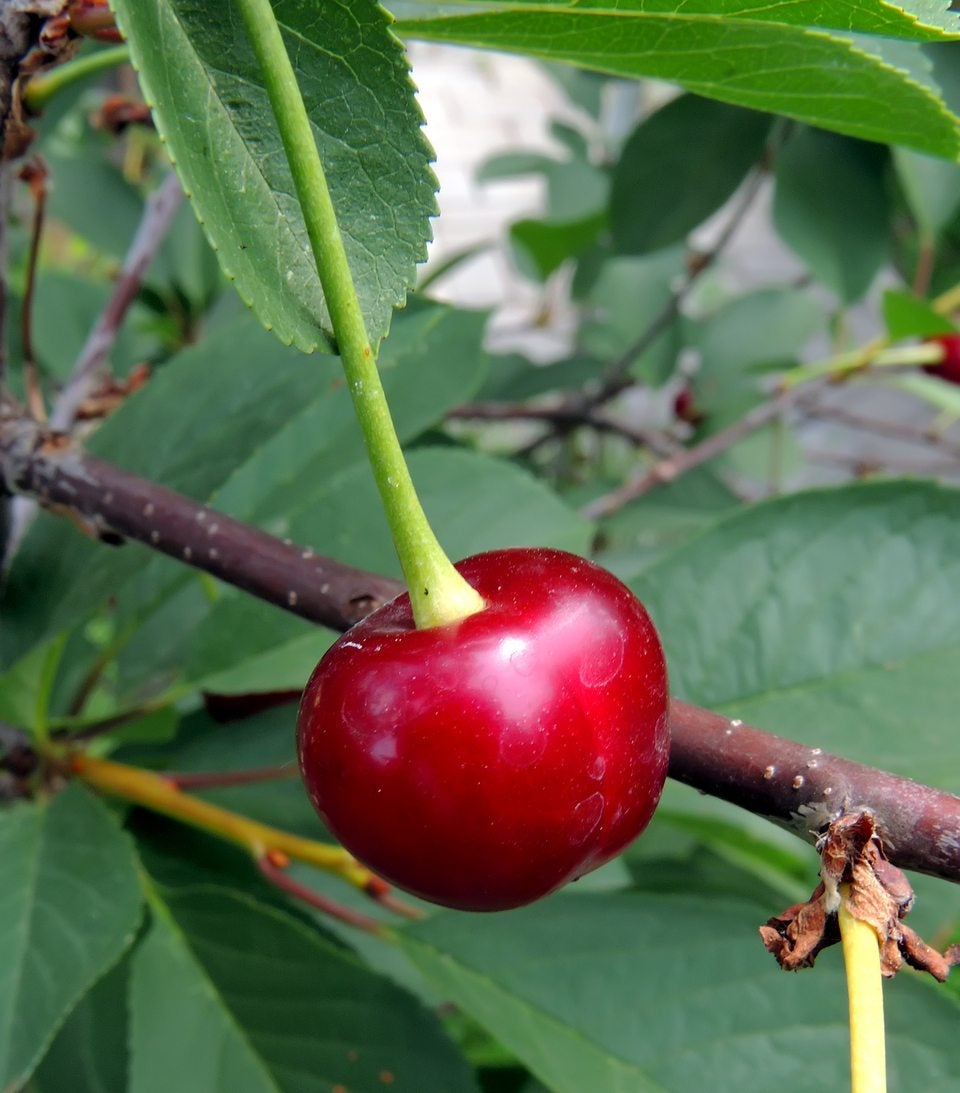
If you live in USDA zone 5 and want to grow cherry trees, you’re in luck. Whether you’re growing the trees for the sweet or sour fruit or just want an ornamental, almost all cherry trees are suited for zone 5. Read on to find out about growing cherry trees in zone 5 and recommended varieties of cherry trees for zone 5.
About Growing Cherry Trees in Zone 5
Sweet cherries, the ones most commonly found in the supermarket, are meaty and sweet. Sour cherries are generally used to make preserves and sauces and are smaller than their sweet relations. Both sweet and sour are fairly hardy cherry trees. Sweet varieties are suited to USDA zones 5 to 7 while sour cultivars are suited to zones 4 to 6. Thus, there is no need to search for cold-hardy cherry trees, as either type will thrive in USDA zone 5. Sweet cherries are self-sterile, so they need another cherry to aid in pollination. Sour cherries are self-fertile and with their smaller size might be a better choice for those with limited garden space. There are also several flowering cherry trees to add to the landscape that are suited to USDA zones 5 to 8. Both Yoshino and Pink Star flowering cherry trees are examples of hardy cherry trees in these zones.
- Yoshino is one of the fastest-growing flowering cherries; it grows about 3 feet (1 m.) per year. This cherry has a lovely, umbrella-shaped habitat that can reach heights of up to 35 feet (11 m.). It blooms with aromatic pink blossoms in the winter or spring.
- Pink Star flowering cherry is slightly smaller and only grows to about 25 feet (8 m.) in height and blooms in the spring.
Zone 5 Cherry Trees
As mentioned, if you have a smaller garden, a sour or tart cherry tree might work best for your landscape. A popular variety is ‘Montmorency.’ This tart cherry produces large, red cherries in mid to late-June and is available on standard size rootstock or on a semi-dwarfing rootstock, which will produce a tree that is 2/3 the standard size. Other dwarf varieties are available from ‘Montmorency’ rootstock as well as from ‘Meteor’ (semi-dwarf) and ‘North Star,’ a full dwarf. Of the sweet varieties, Bing is probably the most recognizable. Bing cherries are not the best choice for zone 5 gardeners, however. They are far too susceptible to fruit cracking and brown rot. Instead, try growing:
- ‘Starcrimson,’ a self-fertile dwarf
- ‘Compact Stella,’ also self-fertile
- ‘Glacier,’ produces very large, mahogany-red fruit midseason
For these smaller cherries, look for rootstock labeled ‘Mazzaard,’ ‘Mahaleb,’ or ‘Gisele.’ These provide disease resistance and tolerance to poor soils. Other sweet, zone 5 cherry trees include Lapins, Royal Rainier, and Utah Giant.
- ‘Lapins’ is one of the few sweet cherries that can self-pollinate.
- ‘Royal Rainier’ is a yellow cherry with a red blush that is a prolific producer, but it does need a pollinizer.
- ‘Utah Giant’ is a big, black, meaty cherry that also needs a pollinizer.
Choose varieties that are adapted to your area and are resistant to disease if possible. Think about whether you want a self-sterile or self-fertile variety, how large a tree your landscape can accommodate, and whether you want the tree simply as an ornamental or for fruit production. Standard sized fruiting cherries produce 30 to 50 quarts (28-47 L.) of fruit per year while dwarf varieties about 10 to 15 quarts (9-14 L.).
Sign up for the Gardening Know How newsletter today and receive a free copy of our e-book "How to Grow Delicious Tomatoes".

Amy Grant has been gardening for 30 years and writing for 15. A professional chef and caterer, Amy's area of expertise is culinary gardening.
